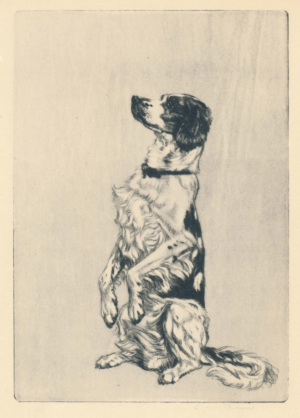
We came across an interesting passage in a book about sporting dogs. The sentence read, “The last successful ‘straightbred’ Llewellin was ‘La Besita,’ the National Champion of 1915.”
To offer proper context, it seems that years ago, the fact that some Americans regarded Llewellin Setters to be an actual breed was highly humorous to the British. Like many American dog journalists, the Brits regarded the Llewellin to be a strain of field working English Setters which, like Pointers dubbed “Papes” after a famous English breeder, was a line simply named after the person who developed it. The book (published in 1972) goes on to say that the Llewellin strain “has been dead for decades.”
Has it?
And is the debate dead, as well?
In 2013, the magazine, Outdoor Life,” published an article by
We’ve heard the point made that back in the 1860s, a dog was introduced to the line that was part Gordon Setter, but Lynn argues that one dog introduced one time into the breed over 150 years ago followed by 150+ years of breeding back to English Setters wouldn’t make the line genetically different from other English Setters.
Is this a valid argument?
We aren’t geneticists, but we’ve known of atavistic throwbacks popping up in litters of purebred dogs, though admittedly, they occurred in ancient breeds in which more than one “dalliance” with another breed occurred many, many years back.
Gundog magazine suffered no ambiguities when it published a breed profile on the Llewellin in 2012, and many other sites refer to the Llewellin as if it is its own breed, as well. For our part, we use established registries as our “default” source, and the AKC, UKC, FCI, Canadian Kennel Club, and England’s Kennel Club all include R.L Purcell Llewellin’s name as part of the breed history, but none refer to the Llewellin as a separate breed. Even the Field Dog Stud Book has always registered the Llewellin Setter under the English Setter Registry with the distinction of Llewellin in italics only after the registration information.
When a Google search on Llewellin puppies yields over 60,000 results, many of them identifying the Llewellin Setter as the dog for the serious upland bird hunter, it’s easy to see how some might continue to think of it as a breed unto itself.
What say our English Setter readers?
Image: English Setter print from 1932 offered by Figure10 on Etsy. Find it here.
